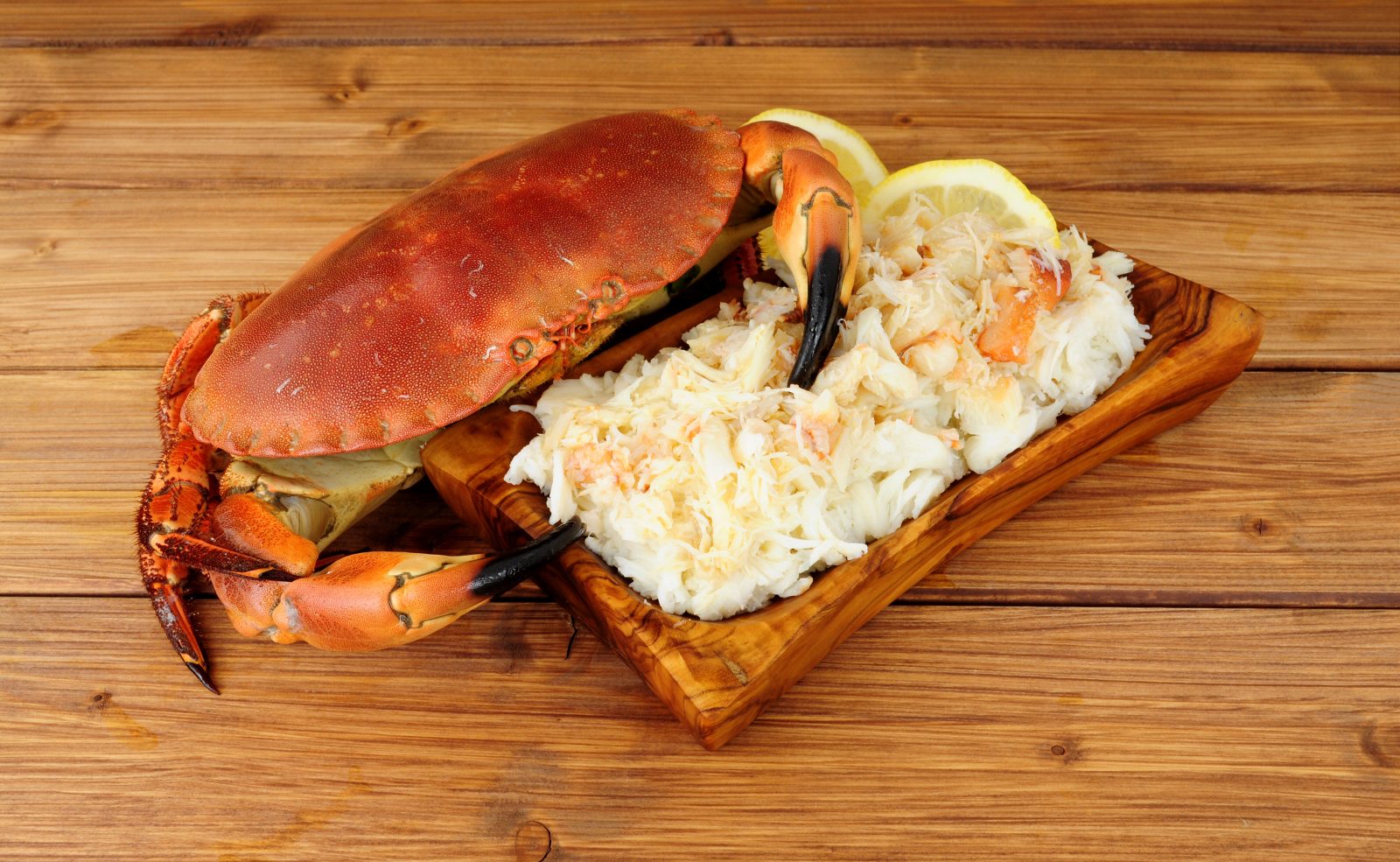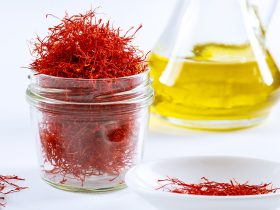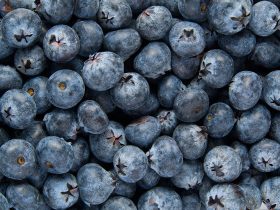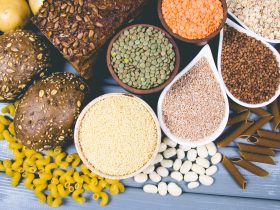If you’ve ever indulged in sushi or opted for Chinese takeout, chances are you’ve encountered the widely-used ingredient – imitation crab meat. Its ubiquity in various culinary settings, from restaurants to home kitchens, is attributed to its versatility, easy preparation, and budget-friendly appeal.
Contrary to common misconceptions, imitation crab meat is not a vegan or vegetarian option. The revelation may be surprising, but the truth goes even further – many imitation crab varieties don’t contain any actual crab meat.
Instead, they often feature a composition skewed towards starch and carbohydrates rather than protein.
Let’s see what imitation crab meat is made of and why you should limit or completely remove it from your diet!
Imitation crab meat – what is it?
Imitation crab meat, or kanikama, has secured its place in popular dishes like California rolls, crab rangoon, and crab cakes. Delving into the essence of this widely used product unveils a process that involves transforming fish into a gel-like substance, creating a faux crab experience.
At the heart of imitation crab lies “kani surimi,” a gel-like substance crafted by grinding various fish types into a thick paste. This serves as the foundation for imitation crab, undergoing a transformative process that includes the infusion of starch, fillers, artificial flavorings, and food coloring. The amalgamation aims to replicate the taste, texture, and appearance of authentic crab meat.
Imitation crab made its debut in 1973 when Sugiyo, a Japanese company, patented the product. Rapidly gaining popularity, it manifested in the familiar crab stick form by 1974. Sugiyo’s collaboration with a U.S.-based company in 1976 marked the introduction of imitation crab to the global stage.
Today, imitation crab meat is a culinary staple globally, gracing an array of dishes. Surimi-based products, including imitation crab, contribute to the utilization of 2 million to 3 million tons of fish worldwide, representing about 2 to 3 percent of the world fisheries supply.
Pollock emerges as the predominant fish used for imitation crab due to its neutral flavor, abundance, and accessibility. However, other fish species such as cod, mackerel, and barracuda may also play a role in the production process.
Critics often draw parallels between imitation crab and the hot dog, labeling it as the seafood equivalent. Sparse in nutrients and laden with additives, it raises questions about its place in the realm of processed convenience foods.
Despite debates about its nutritional profile, imitation crab’s ubiquity prevails. Valued for its versatility, low cost, and ease of preparation, it has become a preferred choice for various consumers, ranging from food manufacturers to restaurants.
Nutritional values of imitation crab vs. real crab
Understanding the nutritional content of imitation crab compared to its authentic counterpart sheds light on the differences in their dietary contributions.
Imitation Crab Nutrition (Per 3-Ounce Serving):
- Calories: 80.8
- Protein: 6.5 g
- Total Carbohydrates: 12.8 g
- Sugar: 5.3 g
- Fiber: 0.4 g
- Total Fat: 0.4 g
- Saturated Fat: 0.2 g
- Monounsaturated Fat: 0.2 g
- Polyunsaturated Fat: 0.1 g
- Trans Fat: 0.001 g
- Magnesium: 36.6 mg (9% DV)
- Vitamin B12: 0.5 mcg (21% DV)
- Sodium: 450 mg (20% DV*)
Real Crab Nutrition (Per 3-Ounce Serving):
- Calories: 97.8
- Protein: 20.1 g
- Total Fat: 1.3 g
- Saturated Fat: 0.2 g
- Polyunsaturated Fat: 0.5 g
- Monounsaturated Fat: 0.3 g
- Trans Fat: 0 g
- Sodium: 587 mg (26% DV*)
- Magnesium: 53.6 mg (13% DV)
- Selenium: 37.7 mcg (69% DV)
- Iron: 2.5 mg (14% DV)
- Zinc: 3.1 mg (28% DV)
- Folate: 35.7 mcg (9% DV)
- Niacin: 2.5 mg (16% DV)
- Riboflavin: 0.2 mg (15% DV)
- Copper: 0.5 mg (56% DV)
- Phosphorus: 109 mg (9% DV)
- Vitamin B12: 8.8 mcg (367% DV)
- Vitamin C: 6.1 mg (7% DV)
- Vitamin B6: 0.1 mg (6% DV)
*Daily Value: Percentages are based on a diet of 2,000 calories a day.
Comparative analysis of imitation crab vs. real crab nutritional values
- Calories: Imitation crab is lower in calories.
- Protein: Real crab provides significantly more protein.
- Fat: Real crab has a slightly higher fat content.
- Sodium: Imitation crab is lower in sodium.
- Vitamin B12: Real crab is a rich source of Vitamin B12.
- Selenium: Real crab offers substantial selenium.
- Additional Nutrients: Real crab provides a broader spectrum of nutrients, including copper, zinc, niacin, riboflavin, iron, magnesium, phosphorus, folate, vitamin C, and vitamin B6.
While imitation crab may be lower in calories and sodium, real crab stands out for its higher protein content and a more extensive array of essential nutrients.
The choice between the two depends on dietary preferences, nutritional goals, and the desire for a fuller nutrient profile.
The composition of imitation crab: ingredients breakdown
Imitation crab, also known as surimi, is a seafood derivative crafted through the processing and flavoring of fish.
Below is an exploration of the common ingredients that typically constitute imitation crab:
- Alaska Pollock (or other white fish): The primary ingredient, serving as the foundational base for imitation crab.
- Water: Used for hydration and blending of ingredients.
- Wheat Starch or Modified Tapioca Starch: Included to enhance texture and bind the surimi.
- Sugar: Introduces sweetness to balance flavors.
- Sorbitol: A sugar alcohol employed as a sweetener and moisture retainer.
- Crab Flavoring: Often artificial crab flavoring is incorporated to elevate taste, mirroring the flavor profile of authentic crab.
- Cornstarch: Occasionally used as a thickening agent.
- Vegetable Oil: Typically soybean oil is utilized for its fat content.
- Egg Whites: Added for texture and binding purposes.
- Salt: Enhances flavor.
- Natural and Artificial Flavorings: Diverse seasonings and flavorings contribute to achieving the desired taste.
- Sodium Tripolyphosphate: A common food additive playing a role in moisture retention.
- Tetrasodium Pyrophosphate: Another additive contributing to improved product texture.
It’s essential to acknowledge that ingredient compositions may vary across different brands and products. For the most accurate information, always refer to the product label.
Individuals with allergies or dietary restrictions should exercise caution and thoroughly review the ingredient list.
Does imitation crab have any potential benefits?
While it may not replicate the exact nutritional profile of fresh crab meat, imitation crab boasts several advantages, making it a preferred option for both consumers and food manufacturers:
- Affordability: Imitation crab stands out for its economical price tag, appealing to budget-conscious consumers.
- Availability: Widely accessible, it can be conveniently sourced from major retailers across the country.
- Convenience: Compared to fresh crab meat, imitation crab is user-friendly, making it a convenient choice for various dishes.
- Versatility: Its adaptability shines, elevating salads, sushi rolls, stuffed mushrooms, dips, cakes, and pasta dishes.
- Calorie Content: Imitation crab presents a lower calorie count per serving, offering a lighter alternative.
- Sodium Levels: It tends to be moderately lower in sodium, contributing to a potentially healthier option.
- Shellfish Allergy Alternative: Crafted from pulverized fish like pollock, certain brands offer a safe choice for those with shellfish allergies.
In summary, while imitation crab may not replicate the intricacies of fresh crab meat, its cost-effectiveness, versatility, and potentially lower calorie and sodium content make it a pragmatic and accessible choice for various culinary applications.
The downsides of imitation crab: health concerns and environmental impact
Is imitation crab a healthy choice, or does it harbor potential risks and drawbacks?
Let’s delve into the downsides associated with this widely used culinary substitute:
- Nutritional Shortcomings
- Lack of Nutrients: Imitation crab falls short in essential nutrients such as protein, vitamin B12, and selenium when compared to real crab meat, which offers a more diverse nutritional profile.
- Allergies and Additives
- High Additive Content: Laden with additives like sugar, starch, vegetable oils, and potential allergens, imitation crab can pose risks to those with sensitivities or allergies.
- Allergic Reactions: The presence of additives like gluten may trigger allergic reactions, particularly in individuals sensitive to gluten or those with celiac disease.
- Hidden Allergens: Imitation crab may contain hidden allergens, including small amounts of real crab, posing a risk for individuals with shellfish allergies.
- MSG Content: Some brands include monosodium glutamate (MSG), known for causing adverse reactions in sensitive individuals, such as headaches and muscle tightness.
- Environmental Impact
- Fishery Impact: The sustainability of fishery sources, primarily Alaska pollock, influences the environmental impact. Certification programs like the Marine Stewardship Council (MSC) indicate sustainable practices.
- Bycatch and Energy Consumption: Bycatch during fishing and energy-intensive processing contribute to the environmental footprint. Sustainable practices aim to minimize these impacts.
- Additives and Packaging: The environmental considerations extend to additives, packaging, and land use involved in imitation crab production.
- Suitability and Considerations
- Not Vegan/Vegetarian: Imitation crab, being fish-based, is unsuitable for those following a vegan or vegetarian diet.
- Gluten Sensitivity: Individuals with gluten sensitivity or celiac disease should avoid imitation crab due to potential gluten content.
- MSG Sensitivity: Those sensitive to MSG should scrutinize labels, as some brands incorporate MSG for flavor enhancement.
- Shellfish Allergy: Individuals with shellfish allergies should be cautious, as imitation crab may contain traces of real crab.
- Pregnancy Considerations: While surimi generally has low mercury levels, pregnant individuals are advised to moderate intake and consult with their healthcare provider.
In conclusion, while occasional consumption may pose minimal risks, a regular diet featuring imitation crab raises concerns due to its nutritional gaps, additive content, and potential environmental impact.
Awareness and moderation are key considerations for individuals navigating health and sustainability aspects.
Healthier alternatives to imitation crab
For those looking to explore healthier alternatives and enrich the nutritional content of their dishes, consider these alternatives to imitation crab:
- Pollock Fish
- Health Benefits: Rich in protein, vitamin B12, selenium, and various essential nutrients.
- Cooking Application: Substitute cooked pollock fish for imitation crab in recipes, offering a healthier and flavorful option.
- Artichoke Hearts
- Health Benefits: Soft, juicy, and high in fiber, promoting digestive health.
- Cooking Application: Utilize fresh, canned, or marinated artichoke hearts as a flavorful substitute in dips, cakes, and tarts.
- Jackfruit
- Health Benefits: A versatile vegan meat replacement, abundant in vitamin C, potassium, magnesium, and manganese.
- Cooking Application: Incorporate fresh or canned jackfruit into crab recipes like crab cakes, crab rangoon, or salads for a meatless alternative.
- Hearts of Palm
- Health Benefits: Low in calories, high in fiber, and a source of manganese and iron.
- Cooking Application: Use hearts of palm in crab-less cakes, chowders, stews, and salads, providing a crunchy and mild flavor.
- Lion’s Mane Mushroom
- Health Benefits: Believed to have protective properties for the brain, heart, and liver, offering various health benefits.
- Cooking Application: Sauté or steam lion’s mane mushroom and incorporate it into dishes such as crab cakes, soups, or pasta for a nutritious upgrade.
Embracing these alternatives not only enhances the flavor and texture of dishes but also provides a nutrient-rich twist to traditional recipes. Exploring these options allows for a diverse and wholesome culinary experience.
















Find Us on Socials